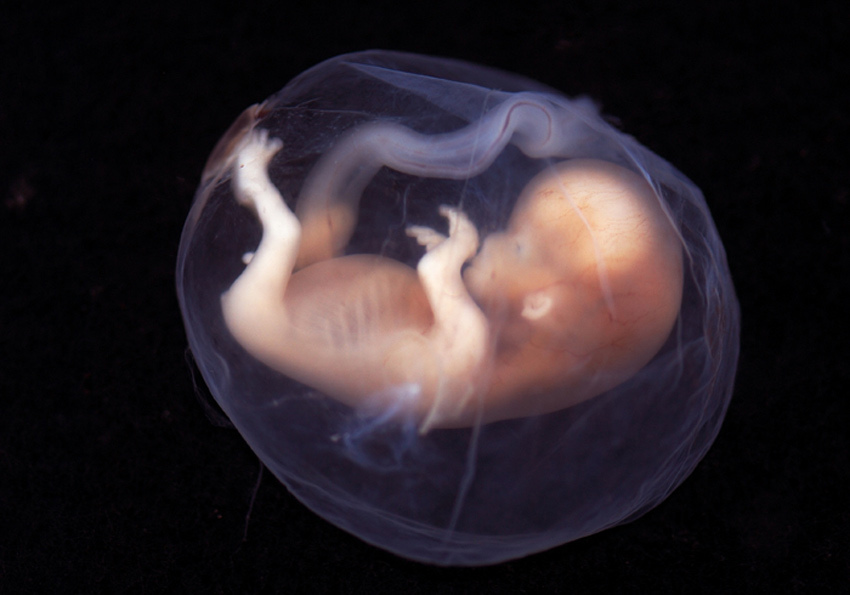
6 things you need to know about the Belfast Court abortion ruling
A Belfast High Court judge has ruled that abortion should be made available in the north of Ireland where the baby had a severe disability or was conceived through rape. The case was taken by the Northern Ireland Human Right Commission and the ruling has been described as driving a coach and horses through Northern Ireland’s abortion law.
Precious Life, the leading anti-abortion group in the north, said that Justice Mark Horner’s ruling was ‘incompatible with human rights’, and it’s hard to see how the court could have made a ruling which was both misinformed and contradictory, and used language that was sometimes cruel and offensive.

HERE’S 6 THINGS YOU NEED TO KNOW ABOUT THE BELFAST COURT RULING:
1. THE JUDGE SAID CHILDREN WITH A SEVERE DISABILITY WERE ‘DOOMED’ AND ‘HAD NO LIFE TO PROTECT’
Justice Mark Horner made some shocking comments in his ruling, which showed both contempt and disregard for unborn children who had what he described as a ‘fatal foetal abnormality’. He described these babies as follows:
“But in the case of an FFA, there is no life to protect. When the foetus leaves the womb, it cannot survive independently. It is doomed. There is nothing to weigh in the balance. There is no human life to protect.”
His words were sharply criticised by parents whose babies had been diagnosed as having life-limiting conditions, who said Justice Horner’s comments in were “grossly offensive, cruel and discriminatory”.
“[His] language is not only grossly misinformed it is deeply offensive and cruel to parents who have lost babies to life-limiting conditions such as anencephaly or Trisomy 13. Our children were alive and kicking in the womb and deserved respect and protection,” said Tracy Harkin of the group Every Life Counts.
Ms Harkin added that her own daughter, Kathleen Rose, had reached her 9th birthday living with Trisomy 13, a condition described by the media and campaigners as a ‘fatal foetal abnormality’.
“Would Justice Horner look my daughter in the eye and say that she was ‘doomed’ and that she ‘had no human life to protect'”, she said. “It’s time for antiquated and discriminatory attitudes towards unborn babies with disabilities to end.”
Justice Horner also said that babies with conditions like Kathleen Rose could be aborted because they were unable to ‘enjoy life’, a reasoning that has no basis in law or ethics. On what highly-subjective basis can any judge decide who is enjoying life and who isn’t? If he had looked at this video of Kathleen Rose, he might have been disabused of such a crass notion.
2. HIS RULING SHOWED A REMARKABLE IGNORANCE OF MEDICAL REALITIES
Justice Horner’s ruling claimed that some unborn children had what he described as a ‘fatal foetal abnormality’ and that these conditions justified abortion whereas a ‘severe malformation’ would not. This is nonsense.
In the first instance, the ‘fatal foetal abnormality’ label is not a medical diagnosis: it cannot, for example, be found in any medical textbook. Babies with conditions such as anencephaly have a severe and life-threatening disability, but it cannot be accurately described as ‘fatal’ and this label is not a diagnosis nor does it describe or inform parents about the condition affecting the baby.
In fact, as a 2012 paper published in the British Journal of Obstetrics and Gynaecology observed, there is no agreed list of ‘lethal’ or ‘fatal’ conditions in the medical literature because, for all of the conditions reviewed – including anencephaly, Trisomy 13 and 18 and others – “prolonged survival” had been observed or was possible.
Justice Horner should have acknowledged that research shows 72% of babies with anencephaly lived for a short time after birth. Of those children, 25% lived up to 5 days, while up to 7% lived up to 28 days after birth.* Or that babies born with Trisomy 13 or 18 have median lives of 7 and 14 days respectively, while up to 10% of these babies live for more than a year.**
Neither did the judge seem to give due consideration to the remarkable success of perinatal hospice care which helps parents make the most of time with their babies, or to findings which show that aborting a baby because of a severe disability has led to negative mental health outcomes for women.
Neither did the judge seem to give due consideration to the remarkable success of perinatal hospice care which helps parents make the most of time with their babies, or to findings which show that aborting a baby because of a severe disability has led to negative mental health outcomes for women.
Most recently, new research published in Prenatal Diagnosis found that women who had an abortion after a diagnosis of anencephaly were significantly more likely to suffer depression and despair than those who continued with the pregnancy.Instead, the judge seemed to rely on outdated information and discriminatory language to justify ending the lives of babies who are very sick. This is shameful.
*Jacquier M, Klein A, Boltshauser E. ‘Spontaneous pregnancy outcome after prenatal diagnosis of anencephaly.’ British Journal of Obstetrics and Gynaecology 2006; 113:951–953
**Rasmussen SA, Wong LY, Yang Q, May KM & Friedman JM. (2003). Population-based analyses of mortality in trisomy 13 and trisomy 18. Pediatrics..111(4 Part 1):777-84.
3. HE ALSO SHOWED A HARSH INSENSITIVITY TO THOSE CONCEIVED THROUGH RAPE
The court ruling held that children conceived through rape could be aborted and that otherwise a raped woman was “merely a receptacle to carry the child of a rapist” and that “the law is enforcing the prohibition of abortion against an innocent victim of a crime in a way which completely ignores the personal circumstances of the victim.”
It is understandable, and desirable, that we should wish to protect and support women who have been raped, whether they have become pregnant or not. The rapist is a criminal and the women is an innocent party to this crime. She is a victim. However, the judge seems to have assumed that abortion is a solution to this distressing and difficult situation.
In fact, figures from the Rape Crisis Centre show that more than eight out of ten rape victims who became pregnant did not avail of abortion. *
A study by Dr. Sandra Mahkorn** involving women who had become pregnant through rape or incest also found that most sexual assault victims refused abortion, and gave some important insights into why that was the case. Most women in Dr. Mahkorn’s study felt that abortion would be another violation, and that issues relating to the rape experience, not the pregnancy, were of primary concern in counselling and rehabilitation. Women in the study who were made pregnant by rape who did not abort said that hostile and negative feelings towards the baby changed during pregnancy. They also said that they felt the baby was an innocent party to the crime just as they were.
Sadly, Justice Horner did not recognise or acknowledge the humanity of these babies, instead choosing to label them a ‘rapists’ child’.
Sadly, Justice Horner did not recognise or acknowledge the humanity of these babies, instead choosing to label them a ‘rapists’ child’.
In doing so he showed a harsh insensitivity to children conceived in rape, and to women who have raised and love children who were conceived in rape through no fault of their own. No child is responsible for the sins – and the crimes – of a rapist.Rebecca Kiessling, who was conceived in rape, says that “Rape victim mothers need real help, not abortion. Justice is served by punishing the perpetrator, not the innocent child.”
*Rape Crisis Network Ireland, 2010 National Rape Crisis Statistics and Annual Report, pp. 53-54.
**Sandra Mahkorn, ‘Pregnancy and Sexual Assault,’ The Psychological Aspects of Abortion, eds. Mall & Watts, (Washington, D.C.: University Publications of America, 1979), 55-69 5

4.THE JUDGE SOUGHT TO IGNORE THE DEMOCRATIC PROCESS
Justice Horner actually acknowledged that legalising abortion was an issue which was “unlikely to be grasped by the legislature in the foreseeable future”. So he decided to ignore the democratic process and force a change to the law.
The judge ignored the fact that a consultation process had been held by the Department of Justice, which did not recommend a change in the law on abortion for sexual assault victims. He also ignored the fact that the vast majority of respondents to the consultation did not want to see abortion laws liberalised.
5. THE COURT DID FIND THAT THERE WAS NO GENERAL RIGHT TO ABORTION
Justice Horner said that there was ‘no right to abortion’ under the European Convention on Human Rights, and pointed out that the European Court in A, B and C v. Ireland found that there was no ‘right’ to abortion.
He also refused the Human Rights Commission’s submission that abortion law amounted to torture.
He also refused the Human Rights Commission’s submission that abortion law amounted to torture.
As Peter Lynas pointed out “[T]he court refused the Human Rights Commission’s submission that abortion law amounted to torture. The commission also wanted to allow abortion if the unborn child had a serious malformation. The judge noted that it was illogical to call for no discrimination against those born with a disability while permitting selective abortion to prevent them being born in the first place. Questions must be asked about a commission that supports such discrimination.
6. THE ATTORNEY GENERAL IS LOOKING AT APPEALING THE RULING TO THE SUPREME COURT
The Northern Ireland Attorney General, John Larkin, is considering an appeal of the Belfast High Court abortion ruling. Mr Larkin, the chief legal adviser to the Stormont Assembly, said he was “profoundly disappointed by the ruling, that there was no public appetite for a change to the law, and that the ruling would take away the rights of disabled unborn children.
Featured
- Campaign to stop EU funding out of state abortions - tell your EU commissioner to vote NO
- Judge recuses himself from case of woman praying in censorship zones for “apparent bias”
- I’m a Celebrity star criticises “sad” UK law that aborts babies with Down Syndrome up to birth
- British actress speaks out on “serious risk” assisted suicide bill has for those with eating disorders
- Caplan’s “Tragic Hysteria of Abortion” discusses the flaws with mainstream Turnaway Study interpretations
- Backlash as Scotland report proposes legalising sex-selective abortion up to birth
- Canada hits new record as 1 in 20 deaths a result of Euthanasia
- Ben Scallan defends pro-life on TV show Dinner with the Enemy
- Influencers share the loss of their beloved unborn baby
- Dublin woman with cancer says unborn child was sent to save her
- Mother and baby doing well after surgery for mother’s cancer during pregnancy
- Josiah: Abortion Survivor
- Loving the Unborn
- Rally for Life 2025
- Don't assist Suicide 2024


























